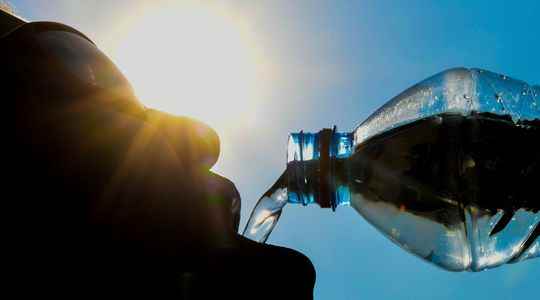This week, the thermometer is panicking: France will experience an episode of exceptional heat, with temperatures exceeding 30°C. In some regions, a few records could be exceeded, said Monday Meteo Francewhile the country is already threatened by drought.
In a context of global warming, temperatures, already mild since the beginning of May, “will start to rise again to peak at very high values in the middle of the week, between Wednesday and Thursday, or even Friday. The maximum will then be between 30 and 34°C in most regions, with the exception of regions near the Channel and the Mediterranean coast”, specifies Météo-France.
The air will be stifling for several days, as in Lyon, which “could experience at least five days in a row exceeding the high heat threshold (30°C), an extremely rare event in May”. This series could even last six or seven days in Montélimar, according to the public establishment.
Hot air propelled towards France
These temperatures can be explained by the formation of a heat dome. It is an anticyclone that stagnates and accumulates with it large masses of air in a particular place. “This hot air mass is spreading towards France, under the effect of a south-westerly flow driven by a low pressure system blocked off the Atlantic Ocean. In its rotary motion, this system propels the very hot air towards France”, details on his The Weather Channel website. It is this principle of the “heat pump” which is responsible for heat waves in summer.
Trapped inside the “dome”, the air thus creates an increase in temperature. “The ridge (famous heat dome) centered between Morocco – where temperatures have been scorching since last week – and Switzerland, will promote the rise of an abnormally hot air mass for the season”, unfolds for its part. French Storm Observatory, Keraunos. This weekend, Spain are expected to break the 40 degree mark for the first time this season.
“Europe again subject to a thermal anomaly of + 15°C compared to normal. 43° expected in Seville while Portugal has suspended its electricity production since February due to a historic drought… goes into a wall”, still laments on the social network, the hydrologist Emma Haziza.
Different from a heat wave
“It is an episode of heat, lasting, extensive and intense, exceptional for the season”, estimates for his part Matthieu Sorel, climatologist at Météo-France, even if the episode does not correspond to the definition of heat wave”. Indeed, the criteria for fulfilling this categorization are as follows: “the national thermal indicator”, average of temperatures recorded at 30 points spread over the entire metropolitan territory, must exceed 25.3°C for three consecutive days. These episodes of heat are not to be confused with the heat wave which is defined as an episode of high temperatures day and night over a long period.
In addition, this early heat is accompanied by a “remarkable meteorological drought”. “Across the country, it only fell 12.3 mm during the first half of May, the lowest total since the start of the indicator in 1959”, indicates on Twitter, Gaëtan Heymes, forecasting engineer and snow expert at Météo-France.
The heat is increasing all over France on Tuesday and isolated thunderstorms will break out at the end of the afternoon from the Pays de la Loire to Normandy. It will notably be 28° in Rennes and Lille, 29° in Paris and Nantes, 31° in Bordeaux and 32° in Lyon.
May 1945, the month of records
Temperatures should drop from May 20 and approach normal from May 24, but this episode of heat “should make May 2022 the hottest month ever recorded”, continues Matthieu Sorel.
On Twitter, Météo-France forecaster Etienne Kapikian recalls that mid-May 1945, with an exceptional episode of early heat, still holds certain monthly records to this day, like the 35.3°C recorded in Mont-de- Marsan on May 12, 1945.
“In the context of climate changeperiods of heat waves are set to become more frequent, and tend to set in earlier in the spring than before,” concludes Météo-France.
